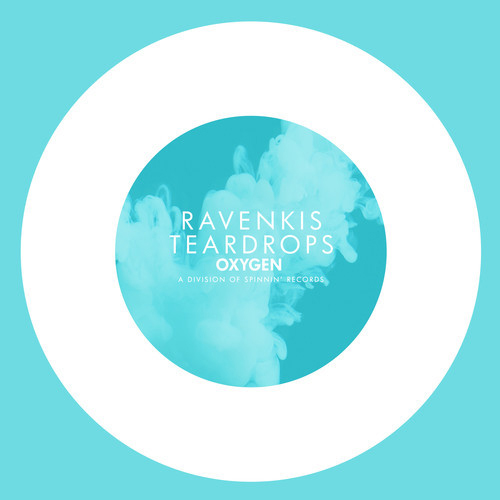-
 play_arrow
play_arrow
Clubalicious Clubalicious Radio
-
 play_arrow
play_arrow
London Calling Podcast Yana Bolder

| MIX VERDICT: TRINNOV AUDIO NOVA |
| THE TAKEAWAY: “Listening using Trinnov’s optimization is a revelation. Immediately I hear more detail, with good balances and bad balances noticeably distinct at my listening position.” |
| COMPANY: Trinnov Audio • www.trinnov.com PRICE: $5,080 USD (includes Nova processor, 3D Microphone and La Remote) PROS: • Accurate, comprehensive room optimization/correction. CONS: • Configuration and measurement takes some time. |
New York, NY (May 2, 2025)—Nova is the latest in the Trinnov Audio line that also includes the ST2 Pro, the 64-channel MC Pro, and D-Mon, a multi-channel optimizer and monitor controller that, with its 16 outputs, is tailored for immersive mixing. Nova replaces the ST2 Pro and features an all-new design while incorporating the same optimization technology as its siblings. Its six outputs make Nova ideal for 5.1 mixing with bass management, or, as in my case, straight-up stereo.

Nova comes in a 1U chassis that has both analog and digital connections and will hook up to any DAW. It also comes with the Trinnov Application control software and an etherCON 3D measurement microphone. For basic monitor control, there is La Remote, a small desktop unit that connects via USB to the front panel of Nova or to your computer. It is sold separately or bundled with a complete system.
Trinnov Application operates as an ethernet bridge using one of two RJ45 connectors on the rear panel. Dante-compatible, this app provides control and interfacing, and acts like a switch for access to other Dante devices on your 1GB network, as well as the Internet. For control using your iPhone or iPad, there is a free app available with some basic functions, including volume, mute and preset selection.
Nova is a network device, but there is no need to know much about networking since it uses Bonjour autoconnect using the same subnet as your computer—it is as “plug n’ play” as possible. I took the suggestion from a Trinnov tech to avoid switches, subnets and other potential configuration conflicts by using an inexpensive 1GB USB C-to-Ethernet adapter, which will connect Nova to your USB hub or directly to your computer.
COMPACT, POWERFUL HARDWARE
Nova comes with six analog XLR balanced outputs, two XLR analog inputs and four additional TRS analog inputs. You can avoid an A/D conversion by using the ADAT/Lightpipe or S/PDIF digital input; I didn’t notice any difference between digital and analog in the monitor path.
The clean front panel has an etherCON Ethernet port for connecting the measurement microphone using the included Cat-6e cable. There is a headphone jack with its own specific DAC connected before optimization. The app has buttons for source select, as well as a new feature for auto-muting the main monitors while wearing the headphones.
There is a front-panel USB jack for the La Remote. It has eight programmable buttons that can be assigned to switch between stored presets, mute, optimization on/off, and a volume control for both your mains and headphones. It also has a large, easy-to-read level meter. I used the volume control on my Avocet and kept La Remote at 0 dB for maximum headroom. The back-panel EQs on my Focal Trio6 ST6 monitors were set to flat.

SOFTWARE AND CONTROL
The software, meanwhile, has an organized collection of pages starting with Home, which shows the Nova logo. If you get lost in a submenu, just click on the logo. The GUI’s top menu bar has five subpages: Setup, Optimizer, Graphs, Monitoring and System.
The Setup subpage is divided into Configuration and Calibration Wizard pages. Optimizer shows a threesided chart depicting the three types of optimizations/ corrections taking place. There is Acoustic Correction, including amplitude and phase, Delay, or time alignment for each speaker relative to the listening position, as well as Level matching of every speaker. The Optimizer subpage has controls for channels, bass management (I set it to 50 Hz, 24 dB/octave) and spatialization; Bypass mode disables the Optimizer for uncorrected playback.
The Graphs menu shows “before and after” comparisons of the currently running 20 Hz-to-20 kHz measurement/correction for all outputs, including the subwoofer(s). The Monitoring subpage has settings for downmixes, headphones, direct outs, and the La Remote configuration and preferences. The System menu is a housekeeping page with startup preferences, a latency monitoring choice, a preset library and hardware (CPU) monitoring.
With this system, it is comforting for me to know that the software is constantly being improved with updates sent directly to the units worldwide. Because each unit has a unique IP address, a company expert in France can remotely access your Nova to inspect your measurements and suggest improvements. (Note: Nova was updated during this review to improve its connectivity, and I did notice an improvement.)

MEASUREMENTS AND OPTIMIZATION
The software’s Calibration Wizard takes you through the entire measurement and setup process. The Cat-6e cable carries four channels of audio from the etherCON 3D measurement microphone to Nova. The microphone is phantom-powered and has four omnidirectional, small-diaphragm condenser capsules. These are arranged in a tetrahedral array with a frequency response of 10 Hz to 24 kHz.
In Calibration mode, Nova outputs a Maximum Length Sequence—a pseudorandom binary sequence signal from each speaker individually, including the subwoofer. This sounds like pink noise, but I did hear short impulses within the noise, which I was told allows for computational efficient processing. Your control room must be as quiet as possible while the mic picks up the sound bouncing around. This vast collection of data points is used by the algorithm to develop a profile of the listening space’s acoustics and the loudspeakers playing in it.
Accuracy is key here, with the mic placement and setup being crucial for optimum results. The mic is placed at the measured head/ear height of the listener while sitting at the listening position in front of, and equidistant from, the left and right monitors. Trinnov optimizes at the mix position only. I used a Leica Dist D5 digital tape measure and a self-leveling laser to accurately set the physical distances, height, L/R monitor angles and the exact height of my speakers sitting on Sound Anchor ADJ-2 stands. All measurements were within ±2 mm.
What sets the Trinnov apart from other systems is that it measures and corrects frequency response, phase response, amplitude, group delay and impulse response. It measures and checks the physical location of each speaker in the room and its precise angle as aimed toward the listening position.

INTEGRATING NOVA
I’ve always had challenges getting mixes to translate and sound acceptable outside of my room, which I’ve come to realize has mostly to do with the acoustics. Over time, I have installed absorption and diffusor panels, and I put PSI Audio Active Velocity Acoustic Absorber C20 bass traps in the front corners of my room.
The space measures reasonably flat from the midrange up to through the high frequencies, but as is the case with small residential rooms with 8-foot ceilings, the problems show up in the bass and low-midrange.
For this review, I used the analog stereo outputs from my CraneSong Avocet II monitor controller plugged into the Nova analog inputs.
Nova’s sample rate is 48 kHz for measurements; using higher system sample rates reduces latency but uses more CPU. I externally clocked Nova using the S/PDIF signal from one of my Avid interfaces, which are separately externally clocked from my CraneSong Interstellar master clock and A/D converter. Nova’s System page GUI indicated 30.9 milliseconds of latency.
For mastering or mixing work, this latency is not a problem, but for the lowest possible latency monitoring during tracking and/or overdubbing, you must bypass Nova’s optimization. It’s simply physics. The required FIR filtering, adaptive optimization and processing of this immense amount of data requires about 30 ms of latency. On the Optimizer page, you can bypass the software for uncorrected monitoring.
Listening using Trinnov’s optimization is a revelation. Immediately I hear more detail, with good balances and bad balances noticeably distinct at my listening position. My mixes are now smoother in the low-midrange and bass. Doing A/Bs of my curated reference tracks— some of my own mixes and some from others— was quite an enlightening experience!
The overall subsonic energy now lies within the mix rather than leaping out or disappearing on certain notes. Loose-sounding tubbiness in those frequencies is decreased; the midrange is tighter and more focused, with vocals and guitars clearly defined in their panned positions. Stereo reverbs, delays and room ambiences can be heard more accurately—not necessarily louder, just clearer. These effects, as mixed, are better framed around the center-panned instruments and vocals.
The improvement is not subtle. I’ve now heard how much it improves the sound and accuracy of my mix room. I must have one!
Written by: Admin
Similar posts
Recent Posts
Recent Comments
No comments to show.Featured post

Latest posts
Current show

Femme House
Lp giobbi
FEMME HOUSE RADIO showcases a diverse array of creators, executives, and allies, with a focus on female, gender expansive, BIPOC, and LGBTQIA+ voices. Since launching in February2021, the show has broadcast nearly 150 hours of music by non-male DJs. Hosted by FEMME HOUSE co-founder and Artist-in-Chief LP Giobbi, each episode features an hourlong mix from the featured guest, with a long form interview rebroadcast on FEMME HOUSE’s Twitch and YouTube channels.
closeUpcoming shows

Get Twisted
Tough Love
01:00 - 02:00
Fresh Is Fresh
THIS WEEKS HOTTEST DANCE RELEASES FROM DEE JAY PROMOTIONS
02:00 - 09:00
Love To Be
The Global Connection
09:00 - 11:00
Fresh Is Fresh
THIS WEEKS HOTTEST DANCE RELEASES FROM DEE JAY PROMOTIONS
11:00 - 16:00
I Am House
Crystal Waters
16:00 - 17:00Chart












